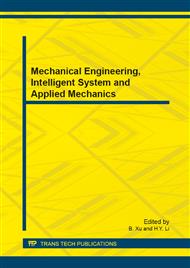p.111
p.116
p.121
p.125
p.129
p.133
p.137
p.143
p.148
An FE-BE Research on the Acoustical Sensitivity of Submerged Elastic Structures
Abstract:
To predict the sound radiation of structures, both a structural problem and an acoustic problem have to be solved. In case of thin structures and dense fluids, a strong coupling scheme between the two problems is essential, since the feedback of the acoustic pressure onto the structure is not negligible. A popular idea for solving this class of problems is to discretizing the structural domain with the finite element (FE) method and with boundary element (BE) method on the acoustic field. A wide range of researches has been carried on the coupling the FE and BE methods. For fast prediction of sound radiation characteristic of similar structures, a coupled solver in frequency domain is presented in this essay. Numerical experiments showed acceleration on noise optimization problems of underwater structures with different materials.
Info:
Periodical:
Pages:
129-132
Citation:
Online since:
December 2013
Authors:
Keywords:
Price:
Сopyright:
© 2014 Trans Tech Publications Ltd. All Rights Reserved
Share:
Citation:


